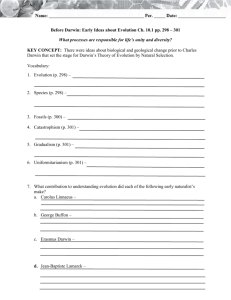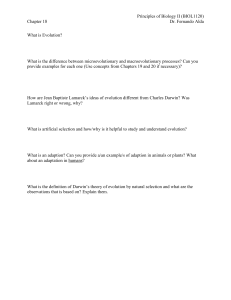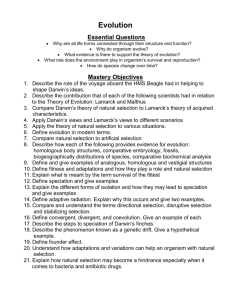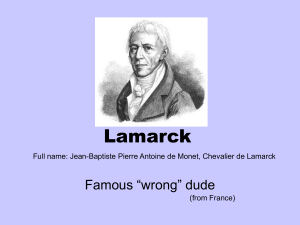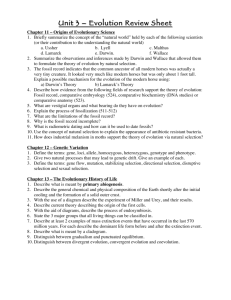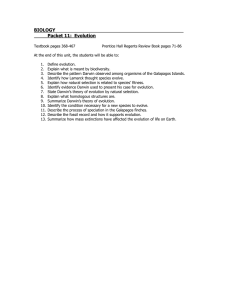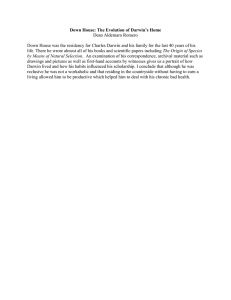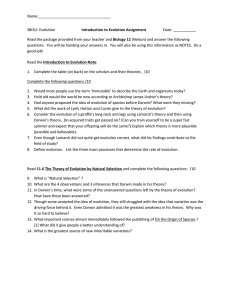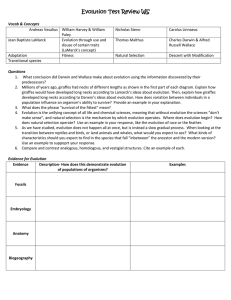Name ___________________________________ Date ________ Evolution Reading guided questions
advertisement
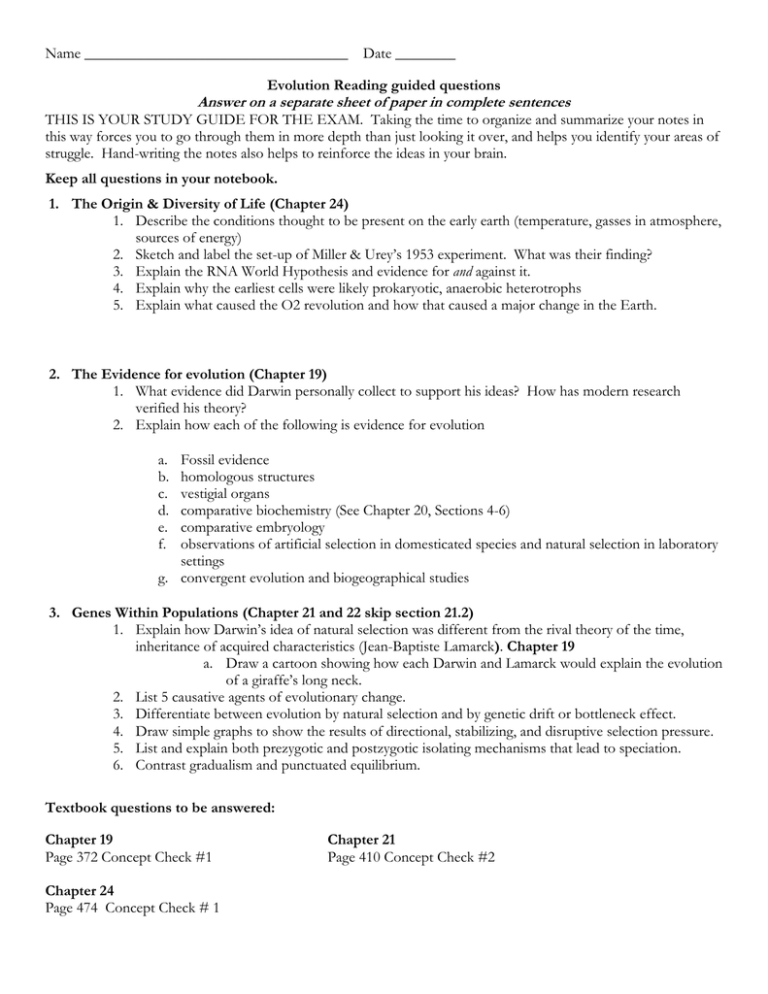
Name ___________________________________ Date ________ Evolution Reading guided questions Answer on a separate sheet of paper in complete sentences THIS IS YOUR STUDY GUIDE FOR THE EXAM. Taking the time to organize and summarize your notes in this way forces you to go through them in more depth than just looking it over, and helps you identify your areas of struggle. Hand-writing the notes also helps to reinforce the ideas in your brain. Keep all questions in your notebook. 1. The Origin & Diversity of Life (Chapter 24) 1. Describe the conditions thought to be present on the early earth (temperature, gasses in atmosphere, sources of energy) 2. Sketch and label the set-up of Miller & Urey’s 1953 experiment. What was their finding? 3. Explain the RNA World Hypothesis and evidence for and against it. 4. Explain why the earliest cells were likely prokaryotic, anaerobic heterotrophs 5. Explain what caused the O2 revolution and how that caused a major change in the Earth. 2. The Evidence for evolution (Chapter 19) 1. What evidence did Darwin personally collect to support his ideas? How has modern research verified his theory? 2. Explain how each of the following is evidence for evolution a. b. c. d. e. f. Fossil evidence homologous structures vestigial organs comparative biochemistry (See Chapter 20, Sections 4-6) comparative embryology observations of artificial selection in domesticated species and natural selection in laboratory settings g. convergent evolution and biogeographical studies 3. Genes Within Populations (Chapter 21 and 22 skip section 21.2) 1. Explain how Darwin’s idea of natural selection was different from the rival theory of the time, inheritance of acquired characteristics (Jean-Baptiste Lamarck). Chapter 19 a. Draw a cartoon showing how each Darwin and Lamarck would explain the evolution of a giraffe’s long neck. 2. List 5 causative agents of evolutionary change. 3. Differentiate between evolution by natural selection and by genetic drift or bottleneck effect. 4. Draw simple graphs to show the results of directional, stabilizing, and disruptive selection pressure. 5. List and explain both prezygotic and postzygotic isolating mechanisms that lead to speciation. 6. Contrast gradualism and punctuated equilibrium. Textbook questions to be answered: Chapter 19 Page 372 Concept Check #1 Chapter 24 Page 474 Concept Check # 1 Chapter 21 Page 410 Concept Check #2
